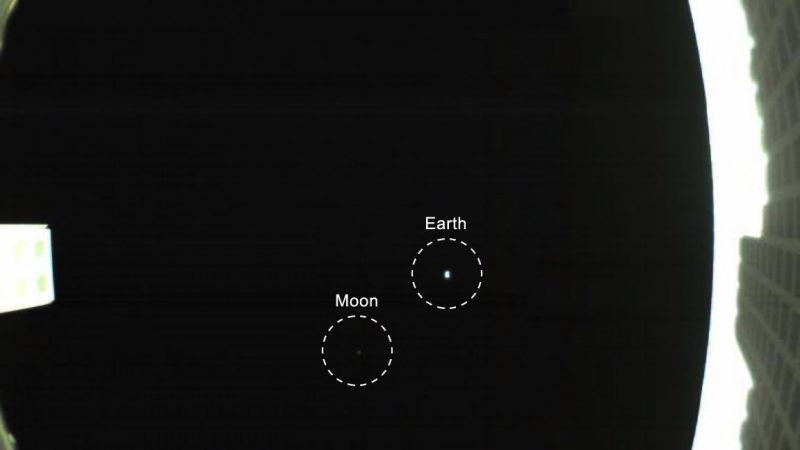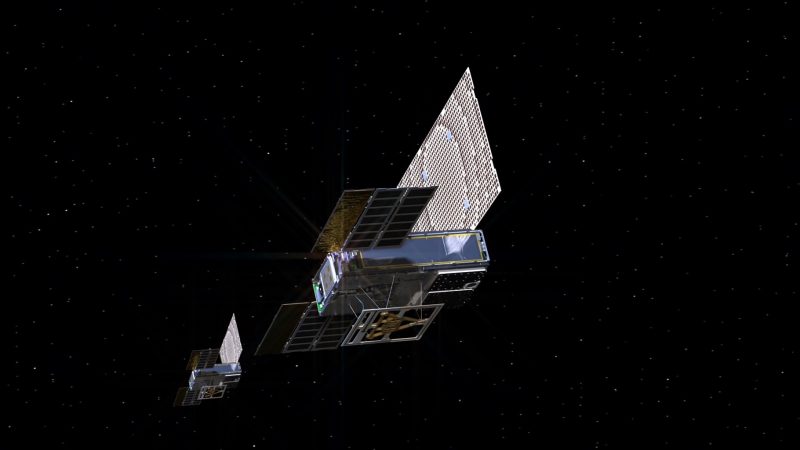
The Voyager 1 spacecraft took a classic portrait of Earth – the famous Pale Blue Dot image – from several billion miles away in 1990. On May 9, 2018, two tiny, boxy spacecraft known as CubeSats – nicknamed Wall-E and Eva by spaceflight engineers at NASA’s Jet Propulsion Laboratory in Pasadena, California – took their own version of a pale blue dot image, capturing Earth and its moon in one shot.
This is the Mars Cube One or MarCO mission, launched on May 5 along with NASA’s InSight lander. InSight will touch down on Mars this November and study the planet’s deep interior for the first time.

The two little spacecraft are the first CubeSats ever to travel to interplanetary space. Most never go beyond Earth orbit; they generally stay below 497 miles (800 km) above the planet. Originally developed to teach university students about satellites, these modular mini-satellites are now a major commercial technology, providing data on everything from shipping routes to environmental changes.
On May 8, Wall-E and Eva set a new distance record (for CubeSats) when they reached 621,371 miles (~1 million km) from Earth. Then Wall-E – aka Mars Cube One B or MarCO-B – used a fisheye camera to snap its first photo on May 9. That photo – which you see above – is part of the process used by the engineering team to confirm the spacecraft’s high-gain antenna has unfolded properly.
Andy Klesh, the MarCO project’s chief engineer at JPL, said:
Consider it our homage to Voyager.

NASA explained Wall-E and Eva’s role in the Insight mission:
The MarCO CubeSats will follow along behind InSight during its cruise to Mars. Should they make it all the way to Mars, they will radio back data about InSight while it enters the atmosphere and descends to the planet’s surface. The high-gain antennas are key to that effort; the MarCO team have early confirmation that the antennas have successfully deployed, but will continue to test them in the weeks ahead.
InSight won’t rely on the MarCO mission for data relay. That job will fall to NASA’s Mars Reconnaissance Orbiter. But the MarCOs could be a pathfinder so that future missions can “bring their own relay” to Mars. They could also demonstrate a number of experimental technologies, including their antennas, radios and propulsion systems, which will allow CubeSats to collect science in the future.
Later this month, NASA said, the MarCOs will attempt the first trajectory correction maneuvers ever performed by CubeSats. NASA explained:
This maneuver lets them steer towards Mars, blazing a trail for CubeSats to come.
Bottom line: The 1st-ever CubeSats – nicknamed Wall-E and Eva – set a new CubeSat distance record on May 8. Then Wall-E turned back and grabbed the first-ever CubeSat pale blue dot image: an image of the Earth and moon.











